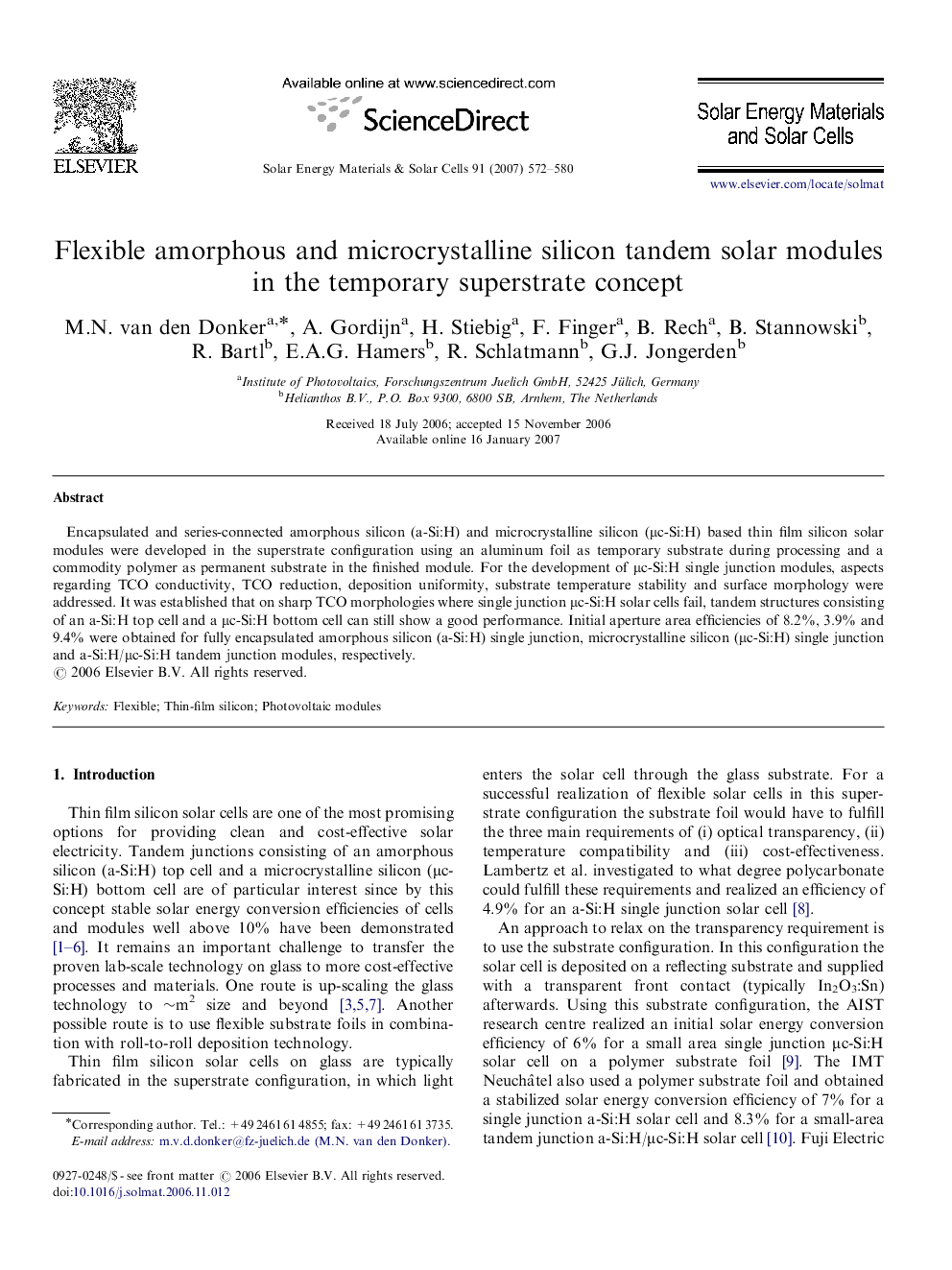| Article ID | Journal | Published Year | Pages | File Type |
|---|---|---|---|---|
| 80239 | Solar Energy Materials and Solar Cells | 2007 | 9 Pages |
Encapsulated and series-connected amorphous silicon (a-Si:H) and microcrystalline silicon (μc-Si:H) based thin film silicon solar modules were developed in the superstrate configuration using an aluminum foil as temporary substrate during processing and a commodity polymer as permanent substrate in the finished module. For the development of μc-Si:H single junction modules, aspects regarding TCO conductivity, TCO reduction, deposition uniformity, substrate temperature stability and surface morphology were addressed. It was established that on sharp TCO morphologies where single junction μc-Si:H solar cells fail, tandem structures consisting of an a-Si:H top cell and a μc-Si:H bottom cell can still show a good performance. Initial aperture area efficiencies of 8.2%, 3.9% and 9.4% were obtained for fully encapsulated amorphous silicon (a-Si:H) single junction, microcrystalline silicon (μc-Si:H) single junction and a-Si:H/μc-Si:H tandem junction modules, respectively.
